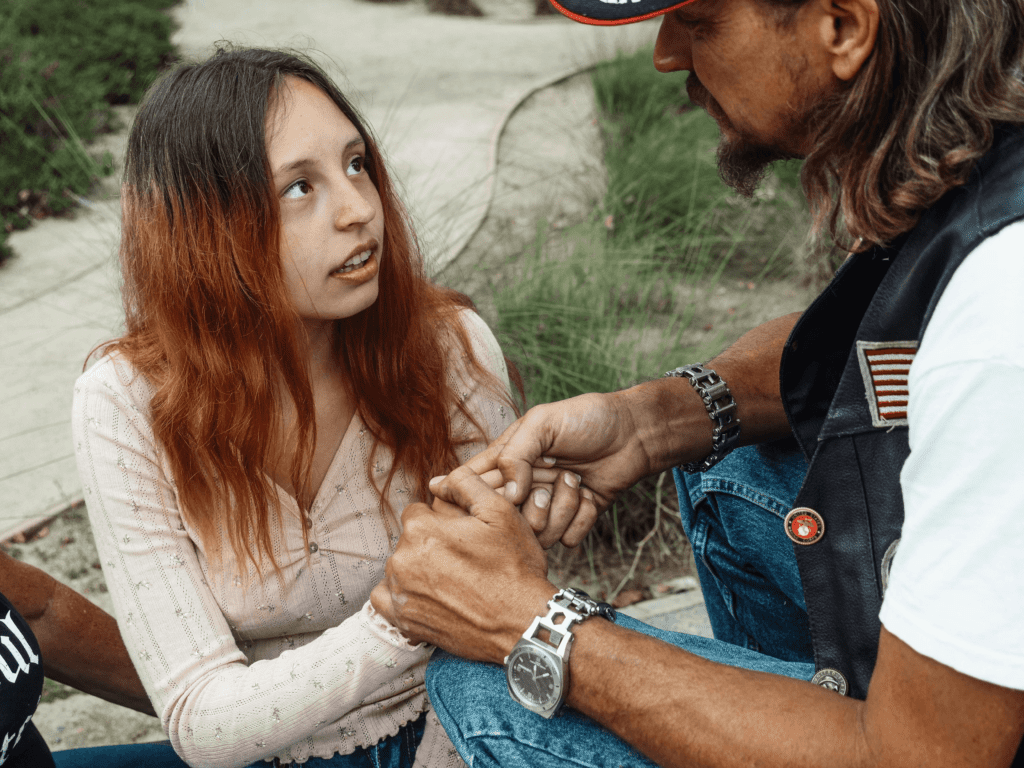Last updated on December 18th, 2024 at 03:15 am
- 1. Understanding PTSD: More Than Just Stress
- 1.1 The Neurobiology of PTSD
- 1.2 PTSD Through History
- 2. The Spectrum of PTSD Symptoms
- 2.1 Intrusive Thoughts and Memories
- 2.2 Avoidance Behaviors
- 2.3 Negative Changes in Mood and Cognition
- 2.4 Hyperarousal and Reactivity
- 3. The Impact of PTSD on Daily Life
- 3.1 Professional Challenges
- 3.2 Relationship Strain
- 3.3 Physical Health Implications
- 4. Recognizing PTSD in Different Populations
- 4.1 PTSD in Children and Adolescents
- 4.2 PTSD in Military Veterans
- 4.3 PTSD in First Responders
- 5. The Journey to Diagnosis and Treatment
- 5.1 Diagnostic Criteria and Assessment
- 5.2 Evidence-Based Treatment Options
- 6. Living with PTSD: Coping Strategies and Self-Care
- 6.1 Mindfulness and Relaxation Techniques
- 6.2 Physical Exercise and Nutrition
- 6.3 Building a Support Network
- 7. The Future of PTSD Research and Treatment
- 7.1 Innovative Therapies
- 7.2 Genetic and Neurobiological Research
- 7.3 Early Intervention and Prevention
- Understanding PTSD Cognitive Symptoms
- PTSD Concentration Difficulties and Memory Problems
- PTSD Physical Symptoms: A Deeper Look
- PTSD Chest Pain and Digestive Problems
- PTSD Fatigue and Sleep Disturbances
- Emotional and Behavioral Aspects of PTSD
- PTSD Anger Outbursts and Emotional Numbness
- PTSD Avoidance Behaviors and Self-Destructive Behavior
- PTSD Mood Swings and Anxiety
- PTSD Depression and Suicidal Thoughts
- Arousal and Reactivity Symptoms of PTSD
- PTSD Muscle Tension and Sweating
- Impact of PTSD on Physical Health
- PTSD Headaches and Stomach Aches
- Immune System Suppression and Appetite Changes
- Treatment Plan and Coping Strategies
- Cognitive Processing Therapy and Combination of Psychotherapy
- Family Therapy and Building Stable Attachments
- Physical Exercise and Enjoyable Activities
- PTSD in First Responders and Military Veterans
- PTSD in Military Veterans
- PTSD in First Responders
- Risk Factors and Preventive Measures
- Biological Factors and Childhood Trauma
- Preventive Measures for High-Risk Groups
- PTSD and Co-Occurring Conditions
- PTSD and Dissociative Disorders
- Alcohol Misuse and Substance Abuse
- The Impact of Childhood Trauma and Abuse on PTSD
- PTSD from Childhood Physical Abuse
- Reactive Attachment Disorder and PTSD
- PTSD in Survivors of Sexual and Domestic Violence
- PTSD and Intimate Partner Violence
- PTSD and Sexual Violence
- Responses to Trauma and Reactions to PTSD
- Immediate and Long-Term Reactions to Trauma
- Emotional and Physical Reactions to Trauma
- PTSD in Various Traumatic Events
- PTSD After Life-Threatening Events
- PTSD from Secondary Trauma
- Frequently Asked Questions
- What Are Common PTSD Emotional Symptoms And How Do They Affect Daily Life?
- How Do PTSD Flashbacks Manifest And How Can They Affect Functioning?
- What Are PTSD Nightmares And How Do They Impact Sleep Quality?
- How Do PTSD Intrusive Thoughts Affect Mental Health?
- How Does Hypervigilance Manifest In PTSD And Affect Behavior?
- What Are PTSD Avoidance Behaviors And Their Impact On Relationships?
- How Does Emotional Numbness Affect People With PTSD?
- What Are PTSD Anger Outbursts And How Do They Affect Interpersonal Relationships?
- How Do PTSD Concentration Difficulties Affect Occupational Performance?
- What Are The Cognitive Symptoms Of PTSD And How Do They Affect Memory?
- How Do PTSD Sleep Disturbances Differ From General Insomnia?
- How Do PTSD Trust Issues Impact Relationships?
- How Does PTSD Hypervigilance Lead To Physical Symptoms Like Muscle Tension?
- What Are PTSD Avoidance Symptoms And How Do They Affect Employment?
- How Do PTSD Nightmares Contribute To Daytime Irritability?
- What Is The Role Of PTSD Guilt And Shame In Maintaining Symptoms?
- How Does PTSD Social Withdrawal Affect Family Dynamics?
- What Are The Physical Symptoms Of PTSD Such As Rapid Heartbeat And Sweating?
- How Do PTSD Suicidal Thoughts Develop And What Factors Contribute?
- How Do PTSD Relationship Difficulties Affect Recovery?
Post-traumatic stress disorder (PTSD) is a complex mental health condition that can profoundly impact an individual’s life following exposure to traumatic events. While often associated with combat veterans, PTSD can affect anyone who has experienced or witnessed severe trauma.
Learn about the symptoms of PTSD, including flashbacks, anxiety, and emotional numbness. Recognize the signs and find effective ways to manage post-traumatic stress disorder.
1. Understanding PTSD: More Than Just Stress
Post-traumatic stress disorder is far more than an extreme reaction to stress. It’s a psychiatric disorder that can develop after exposure to traumatic events such as warfare, sexual assault, natural disasters, or severe accidents. The condition alters brain function and structure, leading to a range of symptoms that can significantly impair daily functioning.
1.1 The Neurobiology of PTSD
Research has shown that PTSD causes measurable changes in the brain. The amygdala, responsible for processing emotions and fear responses, becomes hyperactive. Simultaneously, the hippocampus, crucial for memory formation, and the prefrontal cortex, involved in decision-making and emotional regulation, show reduced activity. These neurological changes explain many of the symptoms associated with PTSD.
1.2 PTSD Through History
While the term “PTSD” was officially recognized in 1980, the condition has been observed throughout history under different names. In World War I, it was called “shell shock,” and in World War II, “combat stress reaction” or “battle fatigue.” Ancient texts from various cultures also describe symptoms consistent with what we now understand as PTSD, indicating that this condition has affected humanity for millennia.
2. The Spectrum of PTSD Symptoms
PTSD manifests through a wide range of symptoms, which can vary in intensity and frequency among individuals. Understanding these symptoms is crucial for recognizing the disorder and seeking appropriate help.
2.1 Intrusive Thoughts and Memories
One of the hallmark symptoms of PTSD is the recurrence of intrusive thoughts and memories related to the traumatic event. These can take the form of:
– Vivid flashbacks that make the person feel as if they’re reliving the trauma
– Nightmares about the traumatic event
– Intrusive daytime memories or thoughts that are difficult to control
These symptoms can be incredibly distressing and may occur without warning, disrupting daily life and causing significant emotional distress.
2.2 Avoidance Behaviors
Individuals with PTSD often develop avoidance behaviors as a coping mechanism. This can manifest as:
– Avoiding places, people, or activities that remind them of the trauma
– Refusing to talk about or think about the traumatic event
– Emotional numbing or detachment from others
While avoidance may provide temporary relief, it can ultimately hinder recovery and lead to social isolation.
2.3 Negative Changes in Mood and Cognition
PTSD can profoundly affect an individual’s mood and thought patterns. Common changes include:
– Persistent negative emotions such as fear, anger, guilt, or shame
– Difficulty experiencing positive emotions
– Distorted beliefs about oneself or others (e.g., “I am bad,” “No one can be trusted”)
– Memory problems, particularly related to aspects of the traumatic event
These changes can strain relationships and impact overall quality of life.
2.4 Hyperarousal and Reactivity
Many individuals with PTSD experience a state of constant alertness, known as hyperarousal. This can manifest as:
– Irritability and angry outbursts
– Reckless or self-destructive behavior
– Hypervigilance (being constantly on guard)
– Exaggerated startle response
– Difficulty concentrating or sleeping
These symptoms can be exhausting and may lead to physical health problems over time.


3. The Impact of PTSD on Daily Life
PTSD can affect every aspect of a person’s life, from work and relationships to physical health and self-perception.
3.1 Professional Challenges
In the workplace, individuals with PTSD may struggle with:
– Concentration and memory issues
– Difficulty managing stress and deadlines
– Interpersonal conflicts due to irritability or social withdrawal
– Absenteeism due to PTSD symptoms or related health issues
These challenges can lead to reduced job performance, career setbacks, or even job loss.
3.2 Relationship Strain
PTSD can place significant strain on personal relationships. Common issues include:
– Emotional numbness leading to difficulty connecting with loved ones
– Trust issues stemming from the trauma
– Irritability and anger outbursts causing conflict
– Withdrawal from social activities and isolation
Partners, family members, and friends may struggle to understand and cope with these changes, potentially leading to relationship breakdown.
3.3 Physical Health Implications
The chronic stress associated with PTSD can have serious physical health consequences, including:
– Cardiovascular problems
– Gastrointestinal issues
– Chronic pain
– Compromised immune function
– Sleep disorders
These physical symptoms can further complicate the management of PTSD and overall quality of life.
4. Recognizing PTSD in Different Populations
While PTSD can affect anyone, its presentation may vary across different groups.
4.1 PTSD in Children and Adolescents
Children and adolescents may exhibit PTSD symptoms differently from adults. Common manifestations include:
– Regressive behaviors (e.g., bedwetting in toilet-trained children)
– Reenacting the trauma through play
– Separation anxiety
– New fears or phobias seemingly unrelated to the trauma
– Changes in school performance or behavior
Early recognition and intervention are crucial for preventing long-term consequences.


4.2 PTSD in Military Veterans
Combat veterans are at high risk for PTSD due to the nature of their experiences. Unique aspects of military-related PTSD may include:
– Difficulty reintegrating into civilian life
– Survivor’s guilt
– Moral injury (distress caused by actions that violate one’s moral beliefs)
– Heightened vigilance in public spaces
The transition from military to civilian life can exacerbate these symptoms, making specialized support crucial.
4.3 PTSD in First Responders
First responders, including police officers, firefighters, and paramedics, face repeated exposure to traumatic events. Their PTSD symptoms may include:
– Heightened cynicism or detachment
– Difficulty trusting others, including colleagues
– Substance abuse as a coping mechanism
– Burnout and compassion fatigue
The cumulative nature of trauma exposure in these professions necessitates ongoing support and preventive measures.
5. The Journey to Diagnosis and Treatment
Diagnosing and treating PTSD can be a complex process, but it’s an essential step towards recovery.
5.1 Diagnostic Criteria and Assessment
Mental health professionals use specific criteria outlined in the Diagnostic and Statistical Manual of Mental Disorders (DSM-5) to diagnose PTSD. The assessment typically involves:
– A comprehensive psychological evaluation
– Discussion of symptoms and their duration
– Exploration of the traumatic event(s)
– Consideration of other potential mental health conditions
Accurate diagnosis is crucial for developing an effective treatment plan.


5.2 Evidence-Based Treatment Options
Several evidence-based treatments have shown efficacy in managing PTSD:
– Cognitive Behavioral Therapy (CBT): Helps individuals identify and change negative thought patterns and behaviors.
– Eye Movement Desensitization and Reprocessing (EMDR): A therapy that involves recalling traumatic memories while engaging in bilateral stimulation, typically through eye movements.
– Prolonged Exposure Therapy: Gradually exposes individuals to trauma-related memories and situations to reduce avoidance behaviors.
– Medication: Certain antidepressants and anti-anxiety medications can help manage PTSD symptoms.
Treatment often involves a combination of these approaches, tailored to the individual’s needs and preferences.
6. Living with PTSD: Coping Strategies and Self-Care
While professional treatment is crucial, individuals with PTSD can also employ various self-help strategies to manage their symptoms.
6.1 Mindfulness and Relaxation Techniques
Practices such as meditation, deep breathing exercises, and progressive muscle relaxation can help manage anxiety and hyperarousal symptoms. Regular practice of these techniques can improve emotional regulation and reduce stress.
6.2 Physical Exercise and Nutrition
Regular physical activity has been shown to reduce PTSD symptoms by:
– Releasing endorphins, which improve mood
– Reducing stress and anxiety
– Improving sleep quality
– Boosting self-esteem
A balanced diet rich in omega-3 fatty acids, antioxidants, and complex carbohydrates can also support mental health and overall well-being.
6.3 Building a Support Network
Connecting with others who understand PTSD can be immensely beneficial. This can include:
– Joining support groups for individuals with PTSD
– Engaging with online communities
– Strengthening relationships with trusted friends and family members
A strong support network can provide emotional validation, practical assistance, and a sense of belonging.


7. The Future of PTSD Research and Treatment
As our understanding of PTSD continues to evolve, new avenues for treatment and prevention are emerging.
7.1 Innovative Therapies
Researchers are exploring novel approaches to PTSD treatment, including:
– Virtual reality exposure therapy
– Neurofeedback training
– Psychedelic-assisted psychotherapy (e.g., MDMA-assisted therapy)
These innovative treatments show promise in early studies and may offer new options for individuals who don’t respond to traditional therapies.
7.2 Genetic and Neurobiological Research
Advances in genetics and neuroscience are shedding light on the biological underpinnings of PTSD. This research may lead to:
– More accurate prediction of PTSD risk
– Personalized treatment approaches based on genetic profiles
– New targeted medications with fewer side effects
Understanding the complex interplay between genes, environment, and trauma could revolutionize PTSD prevention and treatment.
7.3 Early Intervention and Prevention
There is growing emphasis on developing strategies to prevent PTSD or mitigate its severity immediately following trauma exposure. This includes:
– Psychological first aid training for first responders and healthcare workers
– Screening programs to identify high-risk individuals
– Early interventions in the immediate aftermath of trauma
These preventive measures aim to reduce the long-term impact of trauma and improve overall resilience.
Understanding PTSD Cognitive Symptoms
Post-traumatic stress disorder symptoms often include significant changes in thinking and reasoning. PTSD cognitive symptoms may manifest as persistent, distressing thoughts.
PTSD intrusive thoughts and PTSD flashbacks can disrupt daily life. Such intrusive memories can feel overwhelming and recurrent, impacting an individual’s cognitive processing and overall mental clarity.


PTSD Concentration Difficulties and Memory Problems
PTSD concentration difficulties are common, making it challenging for individuals to focus on everyday activities. PTSD memory problems, such as memory loss related to the traumatic experience, are also frequent.
These symptoms can impede one’s ability to work effectively. They can also make it difficult to manage daily tasks and engage in social activities.
PTSD Physical Symptoms: A Deeper Look
PTSD often leads to a variety of physical health problems. PTSD physical symptoms can include persistent headaches, muscle tension, and rapid heartbeat.
These reactions may arise as part of the body’s ongoing response to trauma. This often occurs in response to PTSD hypervigilance, where individuals feel constantly on guard.
PTSD Chest Pain and Digestive Problems
Individuals may also experience PTSD chest pain and digestive problems as part of their response to trauma. These symptoms can resemble those of cardiovascular or gastrointestinal disorders.
Such issues can lead to frequent health care visits. The chronic nature of these physical manifestations can complicate the process of recovery from PTSD.
PTSD Fatigue and Sleep Disturbances
Persistent PTSD fatigue is another common symptom that impacts an individual’s energy levels. PTSD sleep disturbances, such as PTSD insomnia and PTSD nightmares, further aggravate this fatigue.
These sleep-related symptoms can lead to ongoing stress. They may also decrease the individual’s ability to manage other aspects of daily life effectively.
Emotional and Behavioral Aspects of PTSD
PTSD emotional symptoms and PTSD behavioral symptoms are interlinked. They significantly impact relationships and social interactions.
Emotional symptoms, such as PTSD guilt and shame, are often overwhelming. This may lead to PTSD depression or PTSD anxiety, affecting one’s sense of self-worth and emotional wellbeing.


PTSD Anger Outbursts and Emotional Numbness
Many individuals with PTSD struggle with PTSD anger outbursts and irritability. This can lead to PTSD relationship difficulties.
PTSD emotional numbness and detachment can further contribute to relationship challenges. This often results in PTSD social withdrawal and difficulty maintaining stable attachments.
PTSD Avoidance Behaviors and Self-Destructive Behavior
PTSD avoidance behaviors are used as coping mechanisms to avoid triggering memories of the traumatic situation. These behaviors may escalate into PTSD self-destructive behavior, such as substance misuse or PTSD suicidal thoughts.
These symptoms can significantly hinder recovery. Support from mental health specialists is essential to mitigate these risks.
PTSD Mood Swings and Anxiety
PTSD mood swings are a common symptom. They are often accompanied by feelings of fear and anxiety.
PTSD panic attacks can arise unexpectedly. This causes overwhelming fear and further exacerbates PTSD physical symptoms, such as PTSD sweating and PTSD rapid heartbeat.
PTSD Depression and Suicidal Thoughts
PTSD depression may be severe. It is often accompanied by PTSD suicidal thoughts or PTSD self-harm tendencies.
These symptoms necessitate a well-crafted treatment plan. This helps individuals regain a feeling of safety and stability in their lives.
Arousal and Reactivity Symptoms of PTSD
Arousal symptoms such as PTSD exaggerated startle response and PTSD hypervigilance contribute significantly to ongoing PTSD anxiety. These symptoms represent the body’s heightened alert state in response to trauma.
This heightened state contributes to ongoing fear and reactivity symptoms. It also increases the difficulty in coping with stress.
PTSD Muscle Tension and Sweating
PTSD muscle tension and sweating often occur alongside PTSD hypervigilance. These symptoms contribute to increased physical discomfort and stress.
These are typical reactivity symptoms. They reflect an individual’s heightened sensitivity to perceived threats.
Impact of PTSD on Physical Health
The impact of PTSD extends beyond emotional and psychological symptoms. It also includes significant physical health issues.
PTSD Headaches and Stomach Aches
Chronic PTSD headaches and stomach aches can occur as a physical response to ongoing trauma. These symptoms, alongside PTSD digestive problems, illustrate the deep physical toll that PTSD can take.
It is vital for healthcare professionals to address this broad spectrum of symptoms. Such interventions can help improve quality of life for individuals with PTSD.


Immune System Suppression and Appetite Changes
PTSD immune system suppression is a potential consequence of prolonged stress. PTSD appetite changes, such as PTSD weight loss or PTSD weight gain, are also common.
These issues can significantly affect an individual’s health. Addressing these symptoms is key to developing an effective treatment plan.
Treatment Plan and Coping Strategies
An individualized treatment plan for PTSD is crucial for effective recovery. It can include Trauma-focused cognitive-behavioral therapy.
This approach helps individuals address PTSD intrusive thoughts and other symptoms in a safe, structured environment. Tailored interventions can significantly improve overall outcomes.
Cognitive Processing Therapy and Combination of Psychotherapy
Cognitive processing therapy is a form of Trauma-focused psychotherapies. It aims to reduce PTSD cognitive symptoms.
The combination of psychotherapy with medications, such as antidepressant medications, can be beneficial. This approach helps in managing PTSD signs and symptoms effectively.
Family Therapy and Building Stable Attachments
Family therapy can help address PTSD relationship difficulties. This involves loved ones in the treatment process.
Strengthening stable attachments and enhancing family life are crucial. These steps help individuals with PTSD regain emotional balance and improve social engagement.
Physical Exercise and Enjoyable Activities
Physical activities are effective for managing PTSD mood symptoms. Exercise can help reduce PTSD anxiety and PTSD depression.
Engaging in enjoyable activities also alleviates PTSD muscle tension and PTSD fatigue. Regular physical exercise contributes significantly to overall mental well-being.
PTSD in First Responders and Military Veterans
PTSD is notably prevalent in certain populations. Military veterans and first responders are particularly at risk due to frequent exposure to traumatic experiences.
PTSD in Military Veterans
Military service, especially combat experience, is a significant risk factor for PTSD. Veterans often experience PTSD flashbacks, PTSD hypervigilance, and PTSD survivor’s guilt.
These symptoms make reintegration into civilian life challenging. The Department of Veterans Affairs provides resources, including counseling and medical support, for veterans.


PTSD in First Responders
First responders are repeatedly exposed to life-threatening situations and traumatic events. This exposure can lead to PTSD symptoms such as PTSD detachment and PTSD substance abuse.
Early intervention and peer support are essential for first responders. The National Center for PTSD emphasizes these measures for individuals in high-risk professions.
Risk Factors and Preventive Measures
Several biological factors, life experiences, and risk factors contribute to PTSD development. Childhood trauma and a family history of mental health disorders are significant risk factors.
Biological Factors and Childhood Trauma
Biological factors, such as genetic predisposition, increase susceptibility to PTSD. Experiences like childhood physical or emotional abuse also contribute.
The National Institute of Mental Health emphasizes the role of genetic research. Understanding individual differences in PTSD responses is key to improving prevention and treatment.
Preventive Measures for High-Risk Groups
Screening programs and early interventions are vital for high-risk populations. Counseling and screening for acute stress disorder can help reduce long-term impacts.
The U.S. Department of Veterans Affairs supports preventive strategies. Immediate interventions following traumatic exposure are crucial for minimizing PTSD severity.
PTSD and Co-Occurring Conditions
PTSD is often accompanied by other mental health disorders. Co-occurring conditions such as anxiety disorder, borderline personality disorder, and panic disorders are common.
Healthcare professionals must evaluate the presence of these conditions. A comprehensive treatment approach is required for effectively managing PTSD and co-occurring conditions.
PTSD and Dissociative Disorders
PTSD can co-occur with dissociative disorders. PTSD dissociation, PTSD depersonalization, and PTSD derealization are common.
These symptoms serve as psychological defense mechanisms. Addressing dissociative symptoms is crucial for a holistic treatment plan.
Alcohol Misuse and Substance Abuse
PTSD often leads to alcohol misuse and PTSD substance abuse. Individuals attempt to self-medicate, worsening their PTSD symptoms over time.
Mental health specialists advocate for a combination of medications and psychotherapies. This approach addresses both PTSD symptoms and substance abuse issues.
The Impact of Childhood Trauma and Abuse on PTSD
Childhood trauma, including childhood abuse, significantly increases the risk of PTSD. Repeated exposure to traumatic situations can have long-term effects on mental health.
PTSD from Childhood Physical Abuse
Childhood physical abuse is a common cause of PTSD. It often contributes to symptoms like PTSD hypervigilance, PTSD avoidance behaviors, and PTSD trust issues.
The National Child Traumatic Stress Network provides valuable resources for children and families. These resources help in dealing with the aftermath of childhood trauma.


Reactive Attachment Disorder and PTSD
Reactive attachment disorder may develop in children exposed to long-term trauma. This condition can potentially lead to PTSD later in life.
It can hinder the ability to form stable attachments. Specialized interventions are often required for managing symptoms effectively.
PTSD in Survivors of Sexual and Domestic Violence
PTSD is prevalent among survivors of sexual abuse and domestic violence. These traumatic experiences often lead to PTSD emotional symptoms such as PTSD guilt and feelings of fear.
PTSD and Intimate Partner Violence
Intimate partner violence is a significant cause of PTSD. It often results in PTSD flashbacks and PTSD anxiety.
Survivors may struggle with PTSD relationship difficulties and PTSD social withdrawal. Support from mental health specialists and social services is crucial for recovery.
PTSD and Sexual Violence
Sexual violence frequently leads to PTSD. Survivors may experience PTSD mood swings, PTSD avoidance behaviors, and PTSD hypervigilance.
Organizations like RAINN (Rape, Abuse & Incest National Network) provide vital support. Resources offered by such groups are essential for survivors seeking help.
Responses to Trauma and Reactions to PTSD
The response to trauma varies among individuals. Factors such as biological predisposition, type of trauma, and resilience influence these reactions.
Immediate and Long-Term Reactions to Trauma
Immediate reactions to trauma can evolve into PTSD. Early intervention is essential to prevent the development of chronic PTSD signs and symptoms.
Acute stress disorder can be a precursor to PTSD. Addressing it promptly can mitigate long-term psychological effects.
Emotional and Physical Reactions to Trauma
Reactions to trauma can include emotional responses like deep feelings of sadness. Physical reactions may include blurry vision, heart palpitations, and ongoing PTSD chest pain.
These responses are normal reactions to distressing events. However, they may require professional help if they persist.


PTSD in Various Traumatic Events
PTSD can develop following a wide range of traumatic situations. These include natural disasters, terrorist attacks, military combat, and dangerous events.
PTSD After Life-Threatening Events
Life-threatening events such as a plane crash, terrorist attack, or military convoy ambush can trigger PTSD. Common symptoms include PTSD exaggerated startle response and PTSD ongoing fear.
The National Institute for Mental Health provides information on coping strategies. These resources are valuable for individuals affected by such traumatic experiences.
PTSD from Secondary Trauma
Secondary trauma can occur in individuals indirectly exposed to a distressing event. Healthcare providers, emergency services personnel, and social services workers are at risk.
These individuals may experience PTSD symptoms similar to those directly exposed. Support from their respective organizations is necessary to mitigate long-term effects.
From Embrace Inner Chaos to your inbox
Transform your Chaos into authentic personal growth – sign up for our free weekly newsletter! Stay informed on the latest research advancements covering:
Narcissistic Personality Disorder (NPD)
Frequently Asked Questions
What Are Common PTSD Emotional Symptoms And How Do They Affect Daily Life?
PTSD emotional symptoms often include intense fear, guilt, sadness, or anger. These emotions can affect day-to-day activities and make individuals feel overwhelmed.
Emotional instability can impact their ability to interact with others. According to the National Institute of Mental Health, such responses can lead to constant anxiety or hopelessness.
People with PTSD also often experience mood swings that lead to sudden outbursts of anger. This behavior can disrupt relationships and lead to social withdrawal.
Emotional numbness makes it hard for individuals to connect with loved ones. This detachment further hampers personal and family relationships, contributing to isolation.
How Do PTSD Flashbacks Manifest And How Can They Affect Functioning?
PTSD flashbacks involve reliving a traumatic event as if it is happening again. They are often triggered by stimuli like smells, sounds, or sights related to the trauma.
According to Veterans Affairs, flashbacks can be so vivid that individuals may lose awareness of their present surroundings. This can affect their ability to function effectively.
These episodes can significantly hinder daily functioning by making individuals unable to distinguish between the past and present. Such experiences are often overwhelming, resulting in feelings of helplessness.
Flashbacks can also increase anxiety and fear of future episodes. Avoidance behaviors stemming from flashbacks can limit social interaction and professional productivity.
What Are PTSD Nightmares And How Do They Impact Sleep Quality?
PTSD nightmares are intense, recurrent dreams replaying the traumatic event. These nightmares often represent themes of fear or danger and disrupt sleep patterns.
The National Center for PTSD notes that disturbing dreams can lead to chronic insomnia. This sleep deprivation can result in daytime fatigue and difficulties in concentration.
Nightmares contribute to a cycle of poor sleep quality that exacerbates other PTSD symptoms. They can also lead to heightened irritability and hypervigilance, reducing one’s ability to manage stress.
Sleep disturbances over time may lead to weakened immunity and chronic pain. The lack of restorative sleep impairs emotional resilience, leaving individuals vulnerable to emotional numbness.
How Do PTSD Intrusive Thoughts Affect Mental Health?
Intrusive thoughts in PTSD are unwanted, distressing memories of the traumatic event. These thoughts can cause distress and anxiety when they arise unexpectedly.
According to the American Psychological Association, intrusive thoughts can be difficult to control and disrupt daily activities. They often lead to significant mental fatigue.
These thoughts may trigger emotional responses such as fear, shame, or sadness. The unpredictability can make it difficult to engage in normal daily activities.
Individuals dealing with intrusive thoughts often struggle with concentration and decision-making. This cognitive disruption makes tasks such as managing finances or household chores challenging.


How Does Hypervigilance Manifest In PTSD And Affect Behavior?
Hypervigilance is an enhanced state of sensory sensitivity. It keeps individuals constantly on the lookout for threats, making it hard to relax.
According to Mayo Clinic, hypervigilance often leads to increased irritability. It can also cause difficulty sleeping due to the need to remain alert.
This high state of alert can be mentally exhausting as individuals expend energy monitoring for danger. This can lead to heightened reactivity, such as exaggerated startle responses.
Avoidance behaviors resulting from hypervigilance further limit social engagements. This creates barriers in maintaining relationships and reduces overall quality of life.
What Are PTSD Avoidance Behaviors And Their Impact On Relationships?
Avoidance behaviors in PTSD are strategies used to prevent reminders of the trauma. These can include avoiding specific places, conversations, or people.
The Anxiety and Depression Association of America explains that avoidance behaviors may protect individuals from distress but ultimately limit social interaction. These behaviors often lead to isolation.
Avoidance behaviors negatively impact relationships, causing detachment from loved ones. This detachment can result in friends and family feeling shut out or alienated.
Over time, these behaviors interfere with normal routines and reduce opportunities for positive social interactions. This contributes to feelings of loneliness or depression.
How Does Emotional Numbness Affect People With PTSD?
Emotional numbness in PTSD involves feeling detached from emotions. This makes it difficult for individuals to experience feelings like joy or love.
Cleveland Clinic explains that emotional numbness often acts as a coping mechanism. It can cause disconnection from oneself and others.
This numbness significantly affects relationships, making it difficult to connect emotionally with others. Individuals may feel isolated, even in social settings, which can lead to misunderstandings.
A lack of emotional engagement also hinders participation in previously meaningful activities. This decreases overall quality of life and makes it harder to regain fulfillment or joy.
What Are PTSD Anger Outbursts And How Do They Affect Interpersonal Relationships?
PTSD anger outbursts are sudden episodes of intense anger. These outbursts often seem disproportionate to the triggering situation.
According to Mental Health America, anger outbursts are linked to heightened reactivity. They often stem from the stress caused by the traumatic experience.
Family members and friends may find it difficult to understand these sudden outbursts. This can lead to strained relationships and feelings of alienation.
Anger outbursts can also affect the workplace and social settings. The unpredictability of these episodes may cause individuals to withdraw from social situations.
How Do PTSD Concentration Difficulties Affect Occupational Performance?
Concentration difficulties in PTSD make it challenging to stay focused. This affects individuals’ ability to perform tasks at work or school.
Harvard Health explains that intrusive memories or persistent anxiety often disrupt concentration. This can lead to decreased productivity and increased errors.
At work, these concentration issues make completing tasks efficiently difficult. This can result in increased stress and poor performance reviews.
Concentration problems also extend to everyday activities like managing household chores. This can affect independence and increase reliance on others for support.
What Are The Cognitive Symptoms Of PTSD And How Do They Affect Memory?
Cognitive symptoms of PTSD include memory problems. Individuals may forget important aspects of the traumatic event or experience general memory loss.
According to the American Psychiatric Association, trauma interferes with memory processing. This makes recalling specific details challenging or creates fragmented memories.
These memory issues can complicate everyday activities like remembering important dates. They may also lead to problems in personal relationships, as forgetting events can cause frustration.
Memory problems can coexist with vivid, intrusive memories. This dual experience can be confusing and distressing, leading to avoidance behaviors.
How Do PTSD Sleep Disturbances Differ From General Insomnia?
PTSD sleep disturbances include difficulty falling asleep, staying asleep, or achieving restful sleep. These disturbances are linked directly to traumatic experiences.
According to Johns Hopkins Medicine, PTSD-related sleep problems are often accompanied by nightmares or night sweats. These make sleep more distressing compared to general insomnia.
These disturbances contribute to daytime fatigue and reduce functionality. Unlike general insomnia, PTSD sleep issues stem from trauma-related anxiety and fear.
Chronic sleep problems also exacerbate other PTSD symptoms, such as irritability and concentration difficulties. Poor sleep quality impairs emotional regulation, increasing mood swings.
How Do PTSD Trust Issues Impact Relationships?
Trust issues in PTSD often stem from betrayal experienced during the traumatic event. This can lead individuals to become wary of others.
Verywell Mind explains that trust issues manifest as an inability to rely on others. Constant doubt about people’s intentions makes forming close relationships challenging.
These issues create barriers to intimacy in romantic relationships. Suspicion and emotional distancing often lead to misunderstandings and conflicts.
Trust issues also contribute to isolation, as individuals distance themselves to avoid being hurt. This isolation can prevent meaningful, supportive relationships that aid recovery.
How Does PTSD Hypervigilance Lead To Physical Symptoms Like Muscle Tension?
Hypervigilance in PTSD keeps the body in a constant state of alert. This often results in physical symptoms like muscle tension.
Healthline notes that hypervigilance involves continually preparing for perceived threats. This leads to chronic muscle tension and related pain.
Muscle tension causes headaches, neck stiffness, and back pain. These physical symptoms add to the psychological challenges of PTSD.
Constant activation of the fight-or-flight response increases fatigue. This prolonged tension can contribute to long-term physical health problems.
What Are PTSD Avoidance Symptoms And How Do They Affect Employment?
Avoidance symptoms in PTSD include evading reminders of the traumatic event. These symptoms can significantly impact employment.
BetterHelp explains that avoidance behaviors prevent individuals from performing work tasks if they are reminiscent of trauma. This can hinder career growth and job performance.
Avoidance can result in missed meetings and assignments. This decreases productivity and can lead to strained relationships with coworkers.
Such behaviors may also lead to frequent absences. This can put employment at risk, creating financial instability and increasing stress.
How Do PTSD Nightmares Contribute To Daytime Irritability?
PTSD nightmares disrupt sleep, leading to fragmented rest. This contributes directly to daytime irritability.
The National Sleep Foundation highlights that poor sleep quality from recurring nightmares causes frustration. This impairs an individual’s ability to manage stress during the day.
Irritability can make maintaining positive relationships challenging. Chronic lack of sleep also affects work performance due to mood swings.
Ongoing irritability can complicate recovery and increase susceptibility to anxiety. It also reduces resilience to cope with stress effectively.
What Is The Role Of PTSD Guilt And Shame In Maintaining Symptoms?
Guilt and shame are common emotions in PTSD. Individuals often feel responsible for the traumatic event or their reactions to it.
WebMD explains that guilt and shame can prevent individuals from seeking help. This leads to the persistence or worsening of PTSD symptoms.
These emotions contribute to social withdrawal. Feelings of guilt may cause individuals to isolate themselves, complicating recovery.
Guilt and shame can also lead to self-destructive behaviors. Addressing these emotions through therapies like cognitive restructuring is crucial for breaking the cycle.
How Does PTSD Social Withdrawal Affect Family Dynamics?
Social withdrawal in PTSD occurs when individuals distance themselves from others. This often happens to avoid emotional distress or potential triggers.
Psychology Today points out that withdrawal strains family relationships. Loved ones may feel shut out or unsure how to help.
This distancing creates tension within families, particularly if the reasons are not understood. Lack of emotional engagement can lead to misunderstandings or feelings of rejection.
Social withdrawal prevents individuals from receiving necessary emotional support. Without support, symptoms may become more severe and prolonged.
What Are The Physical Symptoms Of PTSD Such As Rapid Heartbeat And Sweating?
Physical symptoms like rapid heartbeat and sweating are linked to PTSD. They often stem from the body’s overactive fight-or-flight response.
MedlinePlus explains that these symptoms occur when individuals are reminded of the trauma. The body reacts as if the danger is still present.
These physical symptoms can lead to increased anxiety. A racing heart and excessive sweating can mimic panic attacks, creating further fear.
These symptoms can also affect social situations, making public outings challenging. They contribute to chronic physical conditions like high blood pressure.
How Do PTSD Suicidal Thoughts Develop And What Factors Contribute?
Suicidal thoughts in PTSD are often driven by overwhelming symptoms. Feelings of hopelessness about recovery can lead to such thoughts.
The National Institute of Mental Health notes that chronic stress and emotional numbness contribute to suicidal ideation. Social isolation further exacerbates these thoughts.
Guilt, shame, and feeling like a burden can heighten the risk. Individuals may consider suicide as an escape from the pain.
Co-occurring conditions like depression can also contribute. Addressing these symptoms with medications and therapies is essential to reduce risk.
How Do PTSD Relationship Difficulties Affect Recovery?
PTSD can create significant challenges in personal relationships. Symptoms like avoidance and irritability can make healthy communication difficult.
The American Psychological Association notes that strained relationships lead to increased tension. This hinders the emotional support necessary for recovery.
Family members may feel frustrated and helpless. This breakdown often leads to a cycle of withdrawal and resentment.
PTSD-related behaviors like hypervigilance can make social interactions challenging. Isolation and conflict can deepen feelings of loneliness, delaying recovery.



